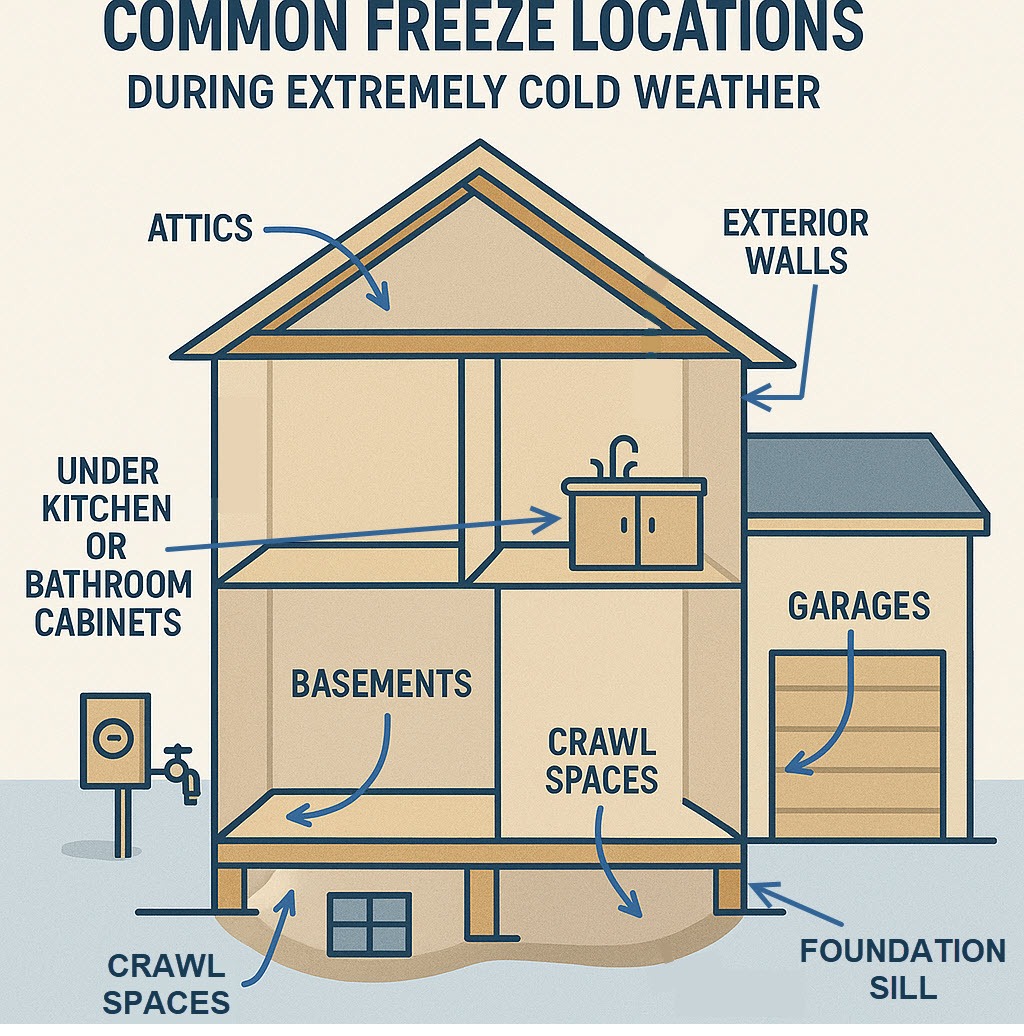It’s getting colder by the day, and soon we’ll be seeing freezing temperatures. Frozen pipes are a common occurrence during sub-zero weather here in beautiful New England, and we want to show you how to prevent a freeze-up. Knowing where to look is a big part of prevention, so let’s cover that before we talk about action steps. Here are some common circumstances where we see frozen pipes:
- Pipes, usually heating pipes, located close to or running alongside the sill (that’s the wooden plate where the floor joists rest on the concrete foundation in your basement). Pipes located here are often exposed to ice-cold drafts coming through a poorly insulated sill. This is particularly common in older homes.
- Pipes running through concrete, stone or brick walls for more than a few inches
- Pipes installed in crawl spaces under a house or adjacent to the basement
- Pipes running in drop-ceilings between floors, where cold drafts may be present and insulation in the floors above and the ceiling tiles below isolate them from the warmth of those rooms (ceiling tiles have a surprisingly high insulating value)
- Outside hose bibs that have not been shut off and drained for the winter (see our recent advisory email on this, or click here for a step-by-step tutorial on winterization steps for outside hose bibs)
- Plumbing located in vanities, which can isolate them from the warmth of the bathroom
- Pipes located anywhere in the basement near a draft source, such as windows, outside doors, unused dryer vent openings or any other opening that permits cold air to enter
- Pipes located in unheated garages, or in garage ceilings for bathrooms on the floor(s) above
- Plumbing in attics, especially when attic vents to the outside are present

